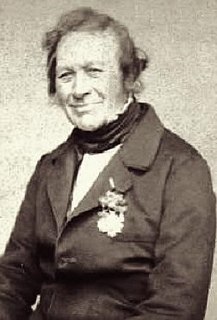Related Research Articles
Georges Émile Jules Daressy was a French Egyptologist.
Adolphe Joseph Reinach was a French archaeologist and Egyptologist who participated in excavations in Greece and Egypt and published works on the Gauls.

The Musée de l'Arles antique or Musée départemental Arles antique or Musée de l'Arles et de la Provence antiques is an archeological museum housed in a modern building designed and built in 1995 by the architect Henri Ciriani, at Arles in the Bouches-du-Rhône département of France.
René Dussaud was a French Orientalist, archaeologist, and epigrapher. Among his major works are studies on the religion of the Hittites, the Hurrians, the Phoenicians and the Syriacs. He became curator of the Department of Near Eastern Antiquities at the Louvre Museum and a member of the Académie des Inscriptions et Belles-Lettres.
Michel Auguste Martin Agénor Azéma de Montgravier was a French archaeologist and soldier.
Stéphane Gsell was a French historian and archaeologist. He was a specialist in ancient Africa and Roman Algeria. His main work is L'Histoire ancienne de l'Afrique du Nord (1913-1929).
Noël Duval was a French archaeologist.
Lucien Camille Golvin was a noted French university professor who specialized in the study of art from the peoples of the Maghreb.

The Arles Rhône 3 is an ancient Roman boat discovered in 2004 with parts of it only 13 feet below the surface in the Rhône River of Arles, France. In the 1st century, it had been a 102-ft long river trading vessel. It has been displayed since 2013 at the Musée départemental Arles antique. A marble Neptune was also discovered in the river. Divers recovered many amphorae. The boat’s flat bottom was made of oak planks.

The Head of Arles, formerly known also as the Head of Livia or the Head with the broken nose is a fragment of a Roman marble statue in two parts, of which only the bust remains, which probably depicts Venus (Aphrodite) and was discovered in the ruins of the Ancient Theatre of Arles in 1823 during the removal of accreted material from the theatre. The Head of Arles represents an iconographic type called Aspremont-Lynden/Arles. It is now part of the permanent exhibition of the Musée de l'Arles et de la Provence antiques with the inventory number FAN.92.00.405.
Eugène Albertini was a 20th-century French teacher in Latin literature, a historian of ancient Rome, especially for North Africa and an epigrapher of Latin texts. He was a member of the Académie des inscriptions et belles-lettres (1938).
Claude Rolley was a French archaeologist, emeritus at the University of Burgundy, writer on art, archaeology of Greece and Gaule.

André Laronde was a French hellenist archaeologist.
Louis Demaison was a 19th–20th-century French historiographer, archaeologist, and with Henri Jadart, one of the most significant contributors to the nineteenth/twentieth history of the Marne department.

Louis Leschi was a 20th-century French historian, epigrapher and archaeologist, a specialist of ancient North Africa.
Jean Andreau is a French historian, former student of the École normale supérieure (1960) and former member of the École française de Rome. As of 2016, he is research director at the EHESS.
The archaeological site of the Trinquetaille glassware in Trinquetaille has been acquired by the town council of Arles in 1978. It has been subject to archaeological excavations in the 1980s, and later since 2013, led by the Archaeology services of the Musée Départemental Arles Antique and the Inrap, along with the contribution of the Ministère de la Culture et de la Communication, the CNRS, the university and independent researchers.

Louis Charles André Alexandre Du Mège or Dumège,, was a French scholar, archaeologist and historian.
Nacéra Benseddik is an Algerian historian, archaeologist and epigrapher. She was born in Bordj Bou Arreridj on 4 December 1949.